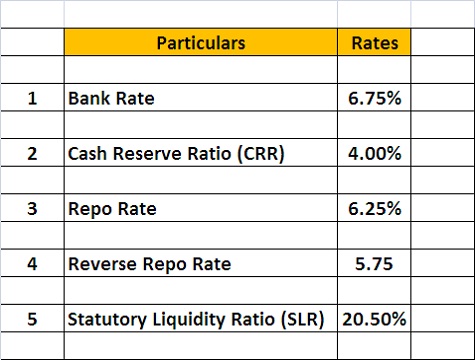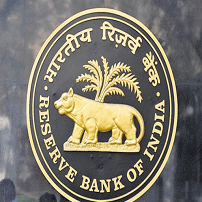RBI Monetary Policy Meet: What to Expect This Time
The Reserve Bank of India (RBI) will meet on 5th and 6th of April 2017 to review monetary policy.
What to Expect From RBI
More or less, RBI is expected to stay mute on the rates in its upcoming monetary policy because of the rise in inflation rate – both wholesale as well as retail.
- Wholesale inflation rate soared to 39-months high of 6.55% in February ’17 (was at 5.25% in January ’17) and retail inflation inched up to 3.65% in February ’17 (was at 3.15% in January ’17) due to higher fuel and food prices. This is probably the biggest reason for RBI to not to cut rates.
- Demonetisations’ impact is likely to seen in January-March quarterly numbers which are another reason for RBI to not to go for a rate cut.
Latest RBI Rates in Indian Banking – 2017

RBI will be keen to watch on (1) The Foreign fund’s inflow, (2) How the monsoon will progress and other related issues to cut rates in the August meet. But for now there in low expectation from RBI to cut rates.
Listed below is the meaning and impact of various rates.
1) Bank Rate
What is Bank Rate – Bank Rate is a long-term rate at which RBI lends bank money to domestic banks. It is now same as the MSF rate.
Impact – Increase in bank rate indicates tightening of RBI monetary policy.
2) CRR (Cash Reserve Ratio)
What is CRR – Cash Reserve Ratio is a certain percentage of deposits which banks are required to keep with the RBI in form of reserves or balances.
Impact – Higher the CRR with RBI, lower will be liquidity in the system and vice versa.
3) Repo Rate
What is Repo Rate – Repo Rate is the rate at which RBI lends to the bank (generally against government securities).
Impact – A cutback in Repo Rate help banks to obtain money from RBI at a cheaper rate and increase in repo rate demoralizes the banks to get money as rate increased and becomes costly.
4) Reverse Repo Rate
What is Reverse Repo Rate – Reverse Repo Rate is the rate at which RBI borrows money from commercial banks.
Impact – Increase in reverse repo rate means that banks will get a higher rate of interest from RBI.
5) SLR (Statutory Liquidity Ratio)
What is SLR – SLR is reserve requirement that commercial banks require maintaining in form of gold or government approved securities before providing credit to customers.
Disclaimer: The contents and data presented here are just for your information & personal use only. While much effort is made to provide the information, I ( Vishal Dalwadi ) or “Fin Blab” do not guarantee the accuracy, correctness, completeness or reliability of any information or data displayed herein and shall not be held responsible.




